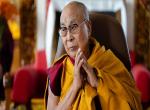In an era of climate emergency, the world is looking for desperate measures to tackle the issue of climate change. Apart from mitigation, the climate change discourse has now moved towards adaptation and nature-based solutions. Nature-based solutions are actions taken to protect, sustainably manage, or restore natural ecosystems that address societal challenges such as climate change, human health, food and water security, and disaster risk reduction effectively and adaptively, simultaneously providing human well-being and biodiversity benefits.
India has always been a promoter of nature-based solutions. This is evident from its efforts to revive and rejuvenate the country’s ecosystems. The capital city of New Delhi has been on a marathon to create as well as revive biodiversity parks across the city. These biodiversity parks are unique creations which show the world that conservation of natural heritage is not just restricted to forests but can be done in urban areas as well. Delhi at present harbours seven biodiversity parks. One of them is the Yamuna Biodiversity Parkwhich is presently spread over an area of approximately 457 acres near Wazirabad village on the western bank of the river Yamuna.
The Yamuna Biodiversity Park has grown from a “barren land” to a rich ecosystem with thousands of plants, animals, and hundreds of bird species as well as closed canopy forests with trees as high as 45 feet. The Park has become a home for a diversity of forest communities, biologically rich wetlands, grassland communities, a wide variety of food yielding species and an abundance of medicinal herbs. Additionally, the Park comprises native flora and fauna which used to exist many decades before and it also acts as a natural conservation site for a specific group of endangered plants.
The Park provides some unfamiliar fruits in addition to many familiar ones. Khirni (Mimusopshexandra) - a locally extinct species is thriving as are Kaith (Feronia limonia), pomegranate (Punicagranatum), sapota (Achyrussapota), jamun (Syzgiumcumuni) etc. It also houses a variety of birds such as parakeets, yellow footed green pigeons, munias, babblers, coppersmith barbets etc. as well as diversity of snakes. The herbal garden of the Biodiversity Park is a collection of around 450 living species. A total of 434 species including 120 species of trees, 280 species of shrubs and herbs, 26 species of climbers and 8 species of grasses have been planted. Additionally, as many as 36 species of butterflies and caterpillars can be sighted at the Park. In fact, in 2016 a leopard was sighted at the Park which proved that there was a functional ecosystem in the area.
Most importantly, the Park consists of two wetlands which serve as natural water bodies. These wetlands serve three useful purposes:-
- Firstly, they add to the diversity of habitats
- Secondly, they perform ecological functions of water purification, groundwater recharge, and storage of rainwaterand
- Thirdly, they provide the soil for raising the ground level to avoid flooding in the post-monsoon period
These wetlands are also home to hundreds of migratory birds as well as native bird species and they also help to preserve the aquatic genetic resources of the river.
The whole idea behind the creation of Biodiversity Parks is to rescue and restore the lost native biodiversity in urban areas. They help in creating a healthy ecosystem and also provide multiple ecological services including carbon sequestration, recharge of groundwater aquifers and educational as well as recreational benefits to the cities. They are beneficial for cities because they help in improving the air quality. The temperatures in these parks are two to three degrees lower as compared to outside. The Yamuna Biodiversity Park also plays an important role in imparting nature education particularly to school and college students who are the decision-makers of tomorrow. Its main function however is environment sustainability which in turn has an impact on people’s lives.
(The paper is the author’s individual scholastic articulation. The author certifies that the article/paper is original in content, unpublished and it has not been submitted for publication/web upload elsewhere, and that the facts and figures quoted are duly referenced, as needed, and are believed to be correct). (The paper does not necessarily represent the organisational stance... More >>
Image Source: https://www.delhibiodiversityparks.org/images/bio-parks/yamuna/Overview-YBP-02.jpg











Post new comment